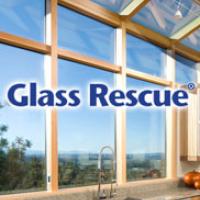
Date: 12 April 2018
SolarWindow Technologies, Inc., developer of liquid transparent coatings that turn ordinary glass into electricity-generating windows for skyscrapers and buildings, announced that the company has now filed more than 90 U.S. and international patents and trademarks for protecting its brand identities, products, services, processes, and materials.
The SolarWindow intellectual property portfolio covers electricity-generating liquid coatings for windows, automobiles, aircraft, mission-critical military applications, and more.
Announced recently, SolarWindow was awarded its first-ever advanced materials manufacturing Cooperative Research and Development Agreement (CRADA) by the U.S. Department of Energy (DOE) Office of Energy Efficiency and Renewable Energy’s (EERE) Advanced Manufacturing Office (AMO).
SolarWindow was awarded the CRADA after submitting a proposal outlining its process technologies and fabrication methods to the DOE’s Roll-to-Roll Advanced Materials Manufacturing Consortium, led by Oak Ridge National Laboratory (ORNL) and partnering with Argonne National Laboratory (ANL), Lawrence Berkeley National Laboratory (LBNL), and the National Renewable Energy Laboratory (NREL). The CRADA will be carried out with the DOE by SolarWindow, ANL, and NREL.
“Our first commercial target market is electricity-generating windows that could turn entire skyscrapers into vertical power generators,” stated Mr. John Conklin, President and CEO of SolarWindow Technologies, Inc.
“Our business team has already negotiated and entered into numerous commercial collaborations with raw materials suppliers, service and technology providers, and even a glass fabrication facility with the goal of manufacturing SolarWindow™ products. While our engineers and scientists have continued to aggressively advance our technical capabilities, recently setting a new company record for power production, our legal and technical teams have strategically strengthened our portfolio of patents and trademark filings.”
Targeting the estimated 5.6 million U.S. commercial buildings, which consume almost $150 billion in electricity annually, the company’s transparent electricity-generating windows could reduce energy costs by up to 50% and could achieve a one-year financial payback for building owners, the industry’s fastest financial return, according to independently-validated power and financial modeling.
The expansive SolarWindow intellectual property portfolio encompasses product development, commercial manufacturing, licensing, sales, and services. The filings cover a variety of classes, including coatings, windows, glass, flexible electricity-generating materials, solar panels, cells, modules, and others.
- The 90-plus SolarWindow International and U.S. patent and trademark filings include:
- Electricity generating windows that can:
- self-tint to darker or lighter shades, based on user preferences;
- power various devices such as smart sensors for delivering data to intelligent energy management systems in buildings
- Electricity-generating coatings for:
- powering mission-critical systems on military and commercial aircraft;
- providing emergency power to pilots;
- application to various three-dimensional objects;
- thin and flexible surfaces, using various application methods;
- Processes and the processing of SolarWindow™ device architectures;
- Enhancements to SolarWindow™ device architecture; and
- Improvements to various SolarWindow™ module performance; among others.
The company’s scientists, engineers, and attorneys continually identify, develop and pursue intellectual property with the objective of providing the high commercial value and strategic position when compared to other technologies. High-value patents and trademarks are actively developed while legacy assets are either repurposed to add value, or eventually retired.
SolarWindow Technologies, Inc. claims rights in all of its trademarks and service marks, and actively works to establish, protect, monitor, and enforce its intellectual property rights in its trademarks and service marks through various intellectual property strategies including federal registration, state registration, and/or establishing common law rights.
 600450
600450















Add new comment